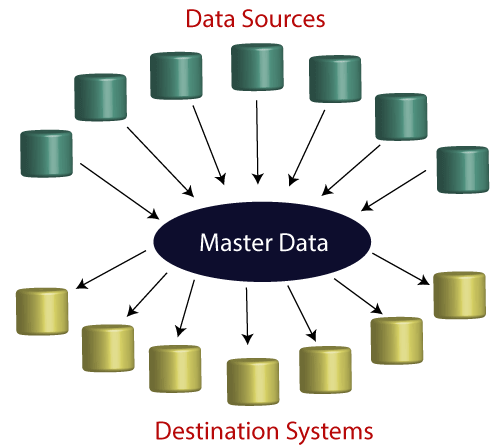Informatica MDMMDM stands for Master data management. It is a method of managing the organization data as a single coherent system. MDM is used to ensure the reliability of data, and this data is in various formats that collect from different data sources. And it is responsible for data analytics decision making, AI training, data initiatives, and digital transformation. Master data management can link all critical data with the master file. MDM is responsible for sharing the data across the enterprise after well implemented. MDM is used as an effective strategy for data integration. Organizations are dependent on the data to streamline operations. The quality of business intelligence, analytics, and AI results depends on the quality of data. Master data management helps:
Master Data Management ProcessesThe full range of MDM processes is a mixture of the underlying process. These are the key to MDM processes, such as:

Master data management is creating a clear and strategic flow between all data sources and the various destination systems. Benefits of MDMA clear and coherent data management is needed for a competitive business strategy. Some important benefits of MDM are given below, such as:
Key FeaturesSome key features of MDM are listed below, such as:
Need of MDMThe MDM solutions are involved in the broad range of transformation, data cleansing, and integration practices. When data sources are added to the system, then MDM initiates processes to identify, collect, transform, and repair the data. When the data meets the quality thresholds, then we can maintain a high-quality master reference with the help of created schemas and taxonomies. By using MDM, the organizations feel relaxed about the accuracy, up-to-date, and consistent of the data all over the enterprise. Use CasesAchieving consistency, control, and data accuracy are important because organizations become dependent on data for all necessary operations. After effective execution, Master data management helps organizations:
MDM ChallengesMaster data management is required to remove poor data quality from the enterprise. For example, in a company, several customer records are stored in different formats in different systems. The organizations may face some delivery challenges such as unknown prospects, overstock or understock products, and many other problems. Common data quality challenges that include:
CausesHere are some reasons for poor data quality, such as:
Trends in Master Data ManagementIn 2018, many organizations tied up with the EU's General Data Protection Regulation (GDPR), which restricts the Personally Identifiable Information (PII) use. It also controls the use of that information at the end of end-users. On January 1, 2020, the California Consumer Privacy Act was slated to take effect even if the content could evolve based on the November 2018 election. But this Act may be replaced by a federal equivalent. Many countries and jurisdictions are creating privacy laws. These laws impact companies or doing business in those locations. The result of the increased survey is dependent on master data management solutions. The metadata management is an important aspect of the MDM. Metadata management is used to manage data about data. Metadata management helps:
Metadata management is always important. But nowadays, it's becoming even more important because organizations are extending out to IIoT, IoT, and third-party data sources with increased the amount of data continues. Master Data Management Best PracticesThe data management reference architectures are provided by the solution provider that explains the basics concepts and helps customers to understand the company's product offerings. The master data management architectural elements and tools include the following:
Master Data Management FutureLarge and medium enterprises are increasingly dependent on master data management tools as the volume and variety of data have continued to grow up, and their businesses have evolved. The MDM architectures become complex and unwieldy when a business adds more and different types of MDM capabilities. Some vendors provide comprehensive solutions to simplify the complexity and increase market share. It replaces the individual point solutions. Due to businesses transition from periodic business intelligence (BI) reports, MDM is growing continuously. Master data management is also important because organizations adopt and build AI-powered systems. An organization will be used some data as training data for machine learning purposes. The master data management and data management become so important because most organizations are hiring a Chief Data Officer (CDO), a Chief Analytics Officer (CAO), or both. When it executed adequately, then the master data management allows companies to:
Next TopicInformatica ETL
|
 For Videos Join Our Youtube Channel: Join Now
For Videos Join Our Youtube Channel: Join Now
Feedback
- Send your Feedback to [email protected]
Help Others, Please Share










